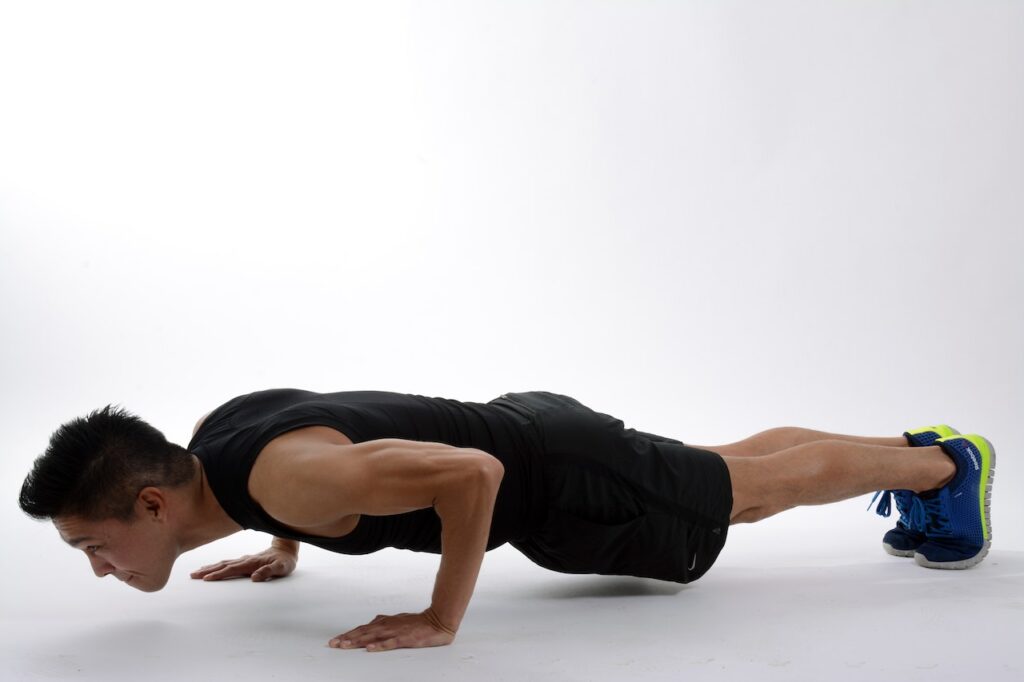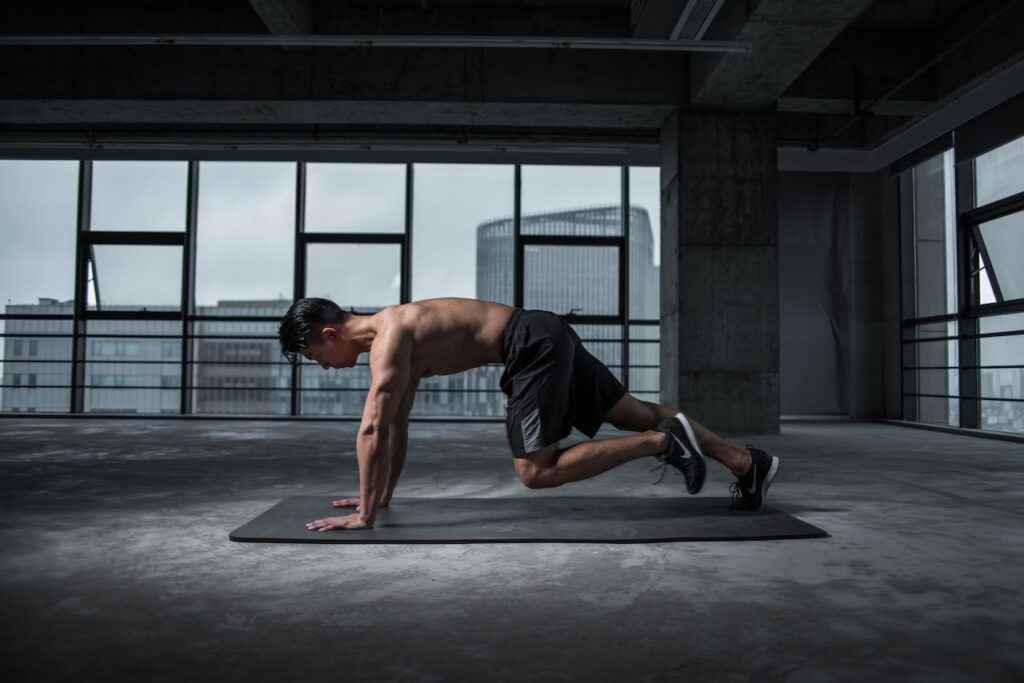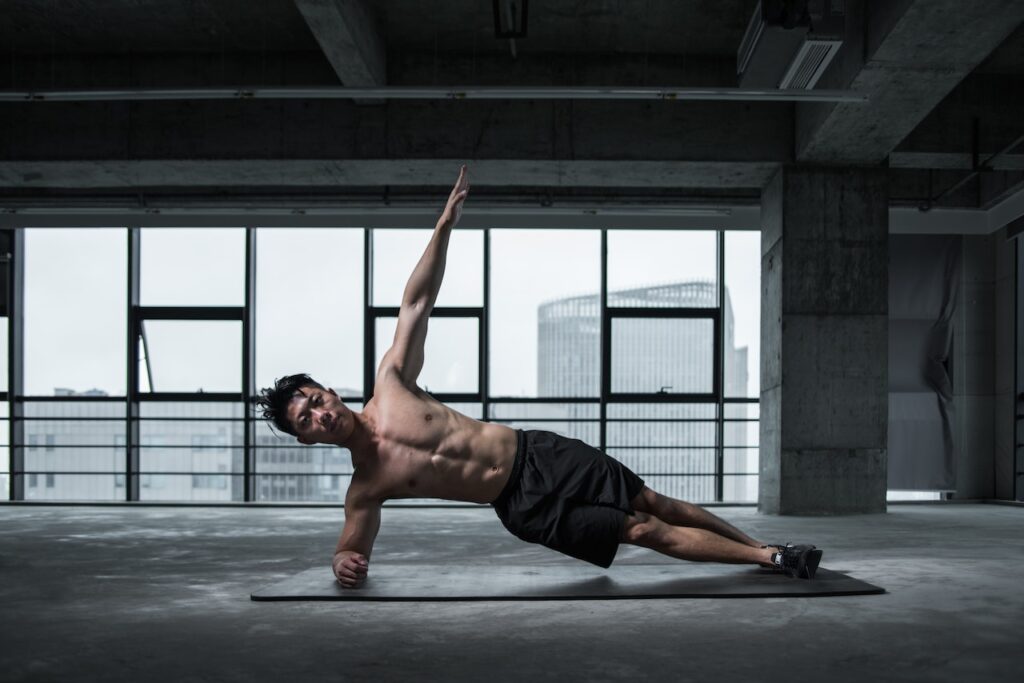Benefits of Bodyweight Exercises
Bodyweight exercises come with a plethora of benefits that extend beyond strength training and weight management:
- Cardiovascular Health: These exercises help increase your heart rate, improving cardiovascular fitness and promoting heart health.
- Flexibility: By using full-body movements, bodyweight exercises enhance flexibility and mobility, reducing the risk of injuries.
- Muscle Strength: From push-ups to squats, bodyweight exercises target multiple muscle groups simultaneously, building strength and endurance.
- Weight Loss: As high-intensity bodyweight exercises can burn significant calories, they’re an effective tool in your weight loss journey.
Convenience: They can be performed anywhere and at any time, making them perfect for those with busy schedules.
Read our article to choose the right home gym equipment for your needs.

Effective Bodyweight Exercises and How to Perform Them
There’s a vast array of bodyweight exercises that can cater to your specific fitness goals. Here are a few examples along with guidelines on how to perform them correctly:
- Push-ups: Start in a high plank position, hands directly under your shoulders. Lower your body until your chest almost touches the floor. Push your body up back to the starting position. Remember to keep your body straight throughout the movement.
- Squats: Stand with feet hip-width apart, toes slightly turned out. Bend at the hips and knees to lower your body as if sitting back into a chair, keeping your chest lifted and knees over toes. Push up to return to standing.
- Planks: Start on your hands and knees. Lower your forearms to the floor with elbows positioned under your shoulders. Step your feet back to form a straight line from your heels to your head. Hold this position while keeping your core tight.

Bodyweight Workout Routines for Beginners
Getting started with bodyweight exercises can be daunting, but it doesn’t have to be. Here are some beginner-friendly workout routines that can help you ease into this new regime:
Routine 1: Strength and Endurance
- Squats: 2 sets of 10 reps
- Push-ups (knee or standard): 2 sets of 10 reps
- Planks: 2 sets, hold for 20 seconds
Routine 2: Cardio and Strength
- Jumping jacks: 2 sets of 15 reps
- Mountain climbers: 2 sets of 15 reps
- Lunges: 2 sets of 10 reps per leg
Remember to take things at your own pace and modify the exercises as needed. Over time, as your strength and endurance improve, you can increase the sets, repetitions, or hold times.
Bodyweight exercises offer an excellent way to get fit, lose weight, and build strength without the need for any equipment. With just a little space and some dedication, you can create effective workout routines that you can do at home or anywhere.
Advanced Bodyweight Workout Routines
Once you’ve mastered the basics, it’s time to push your boundaries further with more challenging bodyweight exercises:
Routine 1: Strength and Agility
- Burpees: 3 sets of 15 reps
- Pike push-ups: 3 sets of 12 reps
- Pistol squats: 3 sets of 10 reps per leg
Routine 2: Core and Cardio
- Jump squats: 3 sets of 15 reps
- Spiderman planks: 3 sets of 10 reps per side
- Mountain climbers: 3 sets of 20 reps
These routines incorporate dynamic movements designed to challenge your strength, agility, and endurance. Remember, these exercises should be challenging, but doable, ensuring you continue to progress safely.

Safety Guidelines and Injury Prevention for Bodyweight Exercises
Safety is paramount in any workout routine. Here are some guidelines to prevent injuries and maximize the benefits of your workouts:
- Proper Form: Always prioritize quality over quantity. A correct form can prevent injuries and ensure you target the right muscle groups.
- Warm-Ups and Cool-Downs: Begin every workout with a warm-up and finish with a cool-down session. This will prepare your muscles for the workout and help them recover afterward.
- Stretching: Incorporate stretching into your routine to increase flexibility and reduce the risk of injury.
- Listen to Your Body: If you feel pain or discomfort beyond normal muscle fatigue, stop and consult a professional if necessary.
Fitness Motivation and Goal Setting
Staying motivated and setting realistic fitness goals can significantly impact your workout routine’s success. Here are some tips to keep you on track:
- Set Clear Goals: Whether it’s losing weight, gaining muscle, or increasing endurance, having clear goals can serve as powerful motivation.
- Track Your Progress: Keeping a record of your workouts can help you track improvements and keep you motivated.
- Nutrition and Diet: A balanced diet fuels your workouts and recovery. Incorporate a mix of proteins, carbs, and healthy fats into your meals.
- Stay Consistent: Consistency is key in fitness. Even on days when you’re not up for a full workout, try to do some light exercises.

